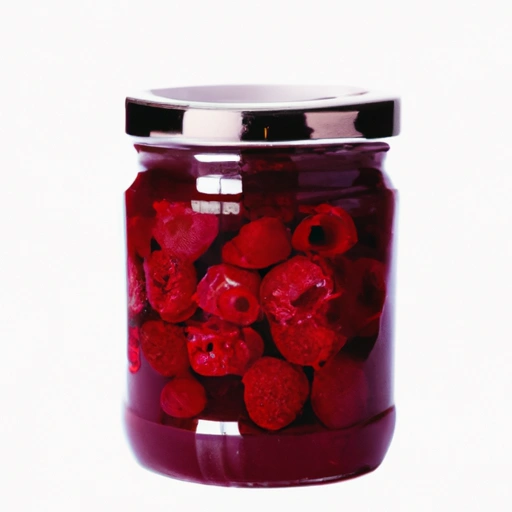Raspberry Preserve
Description

Raspberry preserve is a thick, sweet spread made from raspberries, sugar, and often pectin or lemon juice. It's cooked until the fruit is soft and the mixture has gelled, resulting in a rich, vibrant preserve that's perfect for a variety of culinary uses. Raspberry preserve retains the tart and fruity flavor of fresh raspberries, making it a popular ingredient in both sweet and savory dishes. It is available in jars of various sizes, typically measured in ounces (oz) in American units and grams (g) in European units, with common jar sizes including 10 oz (about 283g) and 12 oz (about 340g).
Common uses
Raspberry preserve is commonly used as a spread for toast, scones, and biscuits, as a filling for cakes, pastries, and donuts, or as a topping for pancakes, waffles, and ice cream. It can also be used in savory applications, such as glazes for meats or as a component in salad dressings.
Nutritional value
Calories
A 1 tablespoon (about 20g) serving of raspberry preserve typically contains around 50-60 calories.
Protein
Protein content is typically negligible, with less than 1 gram per serving.
Fat
Raspberry preserve contains almost no fat, with less than 0.5 grams per serving.
Carbohydrates
Most of the calories in raspberry preserves come from carbohydrates, primarily sugars, with approximately 13-17 grams per serving.
Vitamins
Vitamins in raspberry preserves may include a small amount of vitamin C and vitamin K, derived from the raspberries themselves.
Minerals
Minerals present can include trace amounts of potassium and magnesium.
Health benefits
While raspberry preserves are high in sugars, the fruit content does provide some nutritional benefits, such as antioxidants and vitamin C, which can contribute to immune system health and skin health. Additionally, the dietary fiber found in the seeds of the raspberries can aid digestion.
Potential risks
The high sugar content in raspberry preserves can contribute to dental cavities if consumed in excess. Diabetics and those watching their sugar intake should use raspberry preserves sparingly. Additionally, those with allergies to raspberries should avoid these preserves.
Common recipes
Raspberry preserve is often used in recipes such as thumbprint cookies, Linzer tarts, and Victoria sponge cakes. It can also be swirled into cheesecakes or yogurt for added flavor.
Cooking methods
Raspberry preserve does not usually require further cooking and can be used directly from the jar. However, it can be gently heated to thin its consistency for glazes or sauces.
Pairing with other ingredients
Raspberry preserve pairs well with peanut butter, chocolate, almonds, lemon, and other citrus flavors. It also complements creamy cheeses like Brie and mascarpone.
Summary
Raspberry preserve is a versatile and delicious ingredient that adds sweetness and raspberry flavor to a variety of dishes. Whether used in desserts, as a spread, or in savory applications, its rich taste and bright color can enhance the overall experience of any meal. When using raspberry preserves, be mindful of the sugar content, and enjoy it as part of a balanced diet.